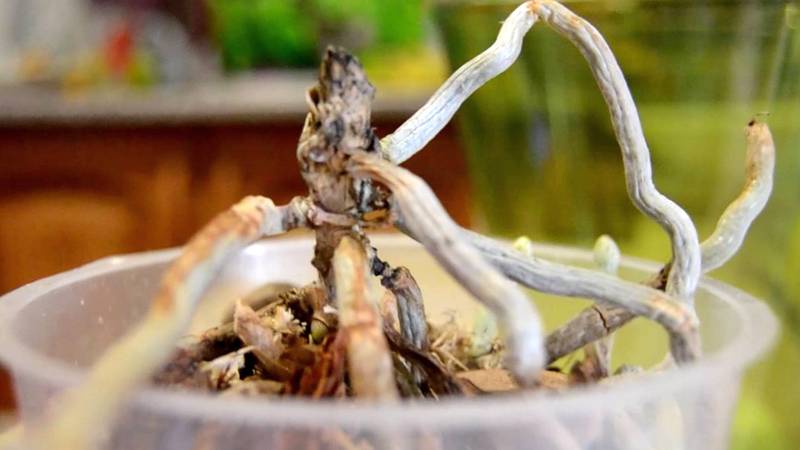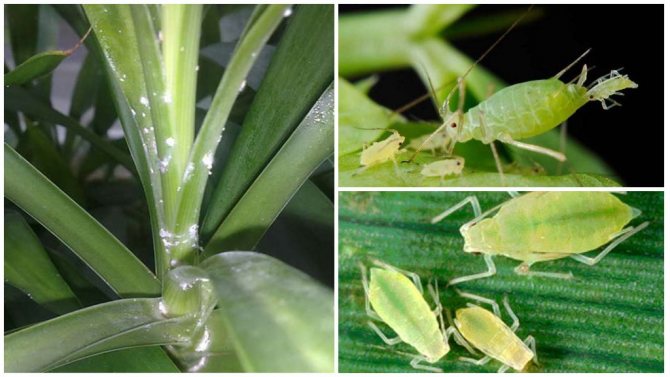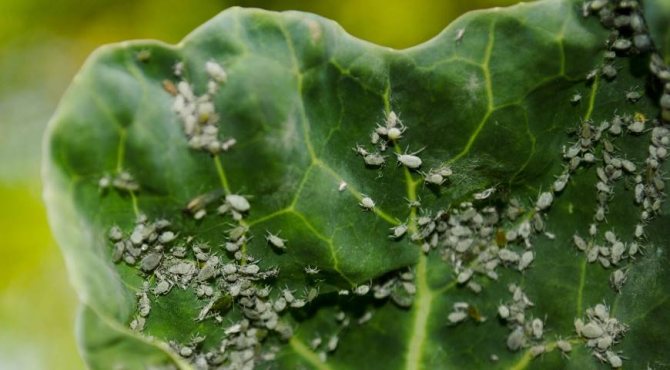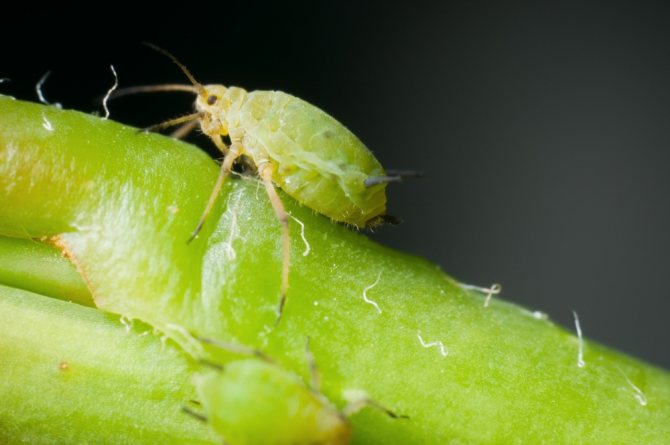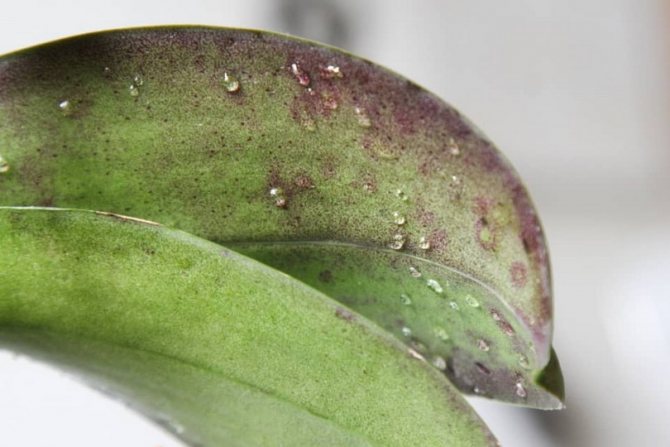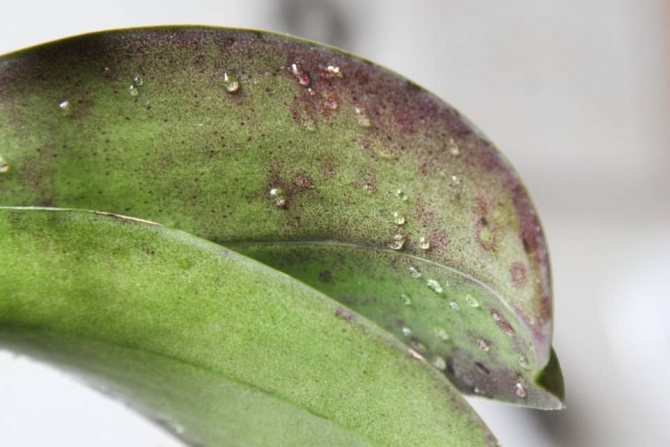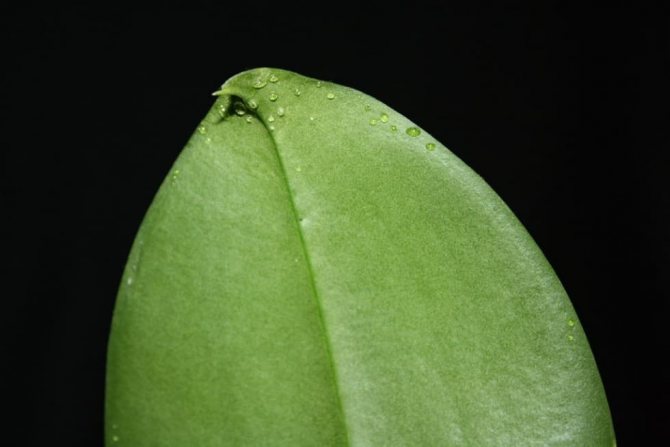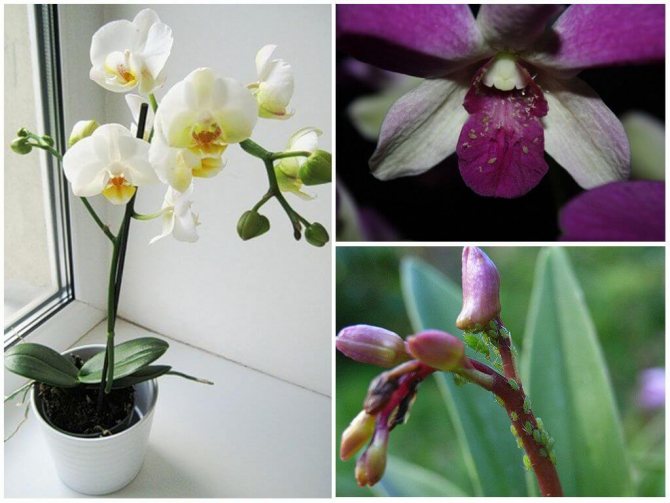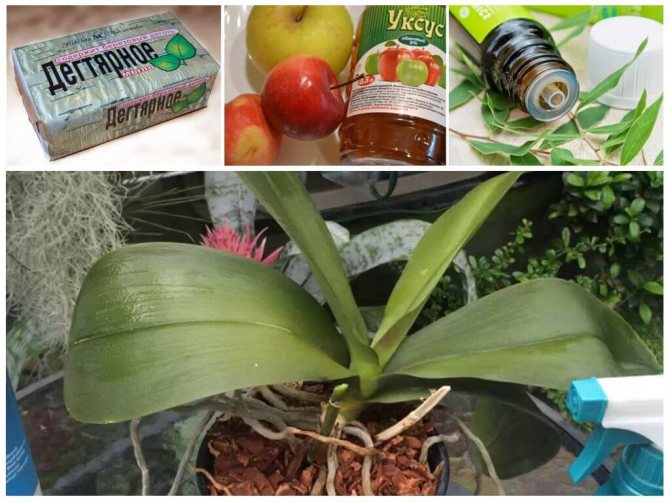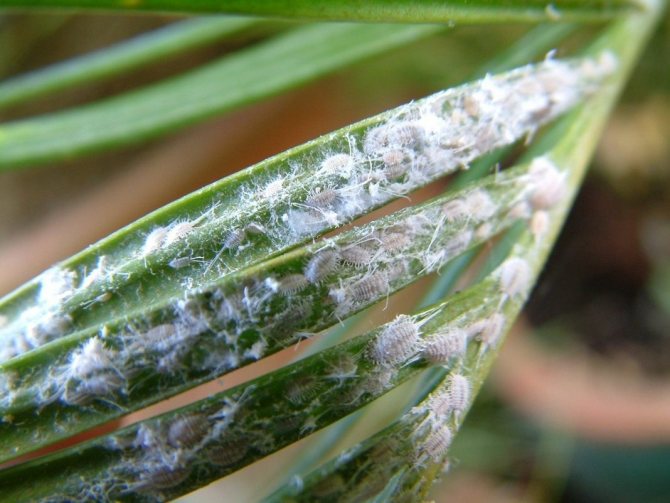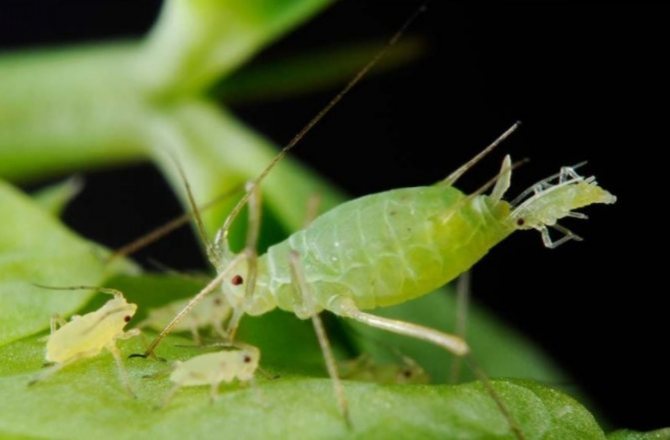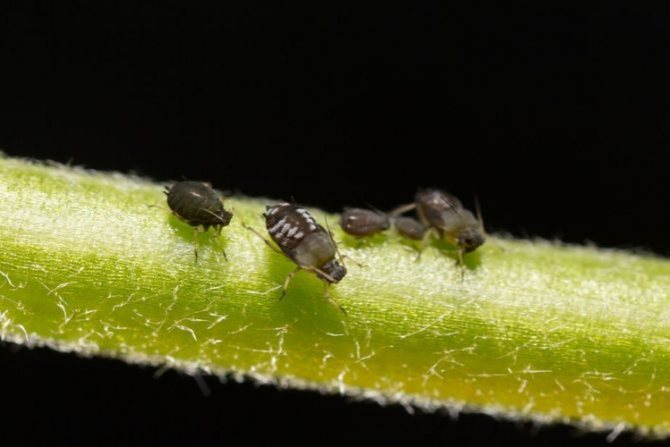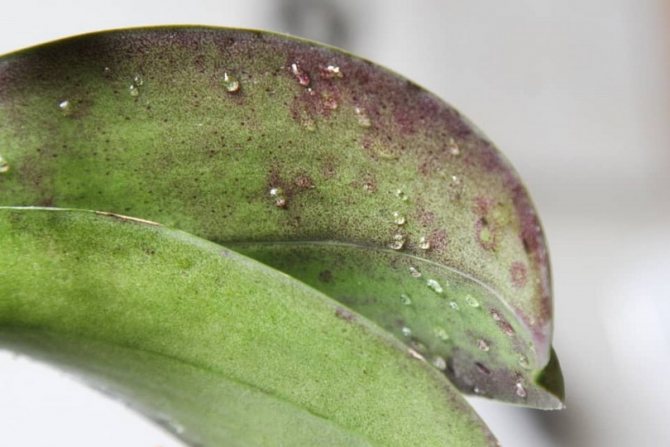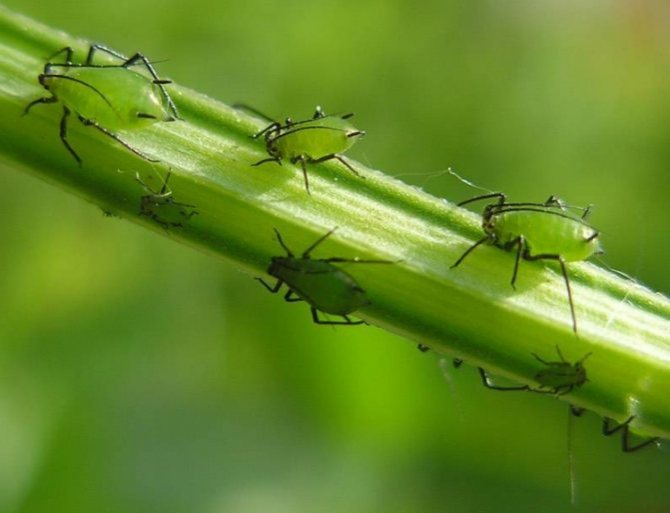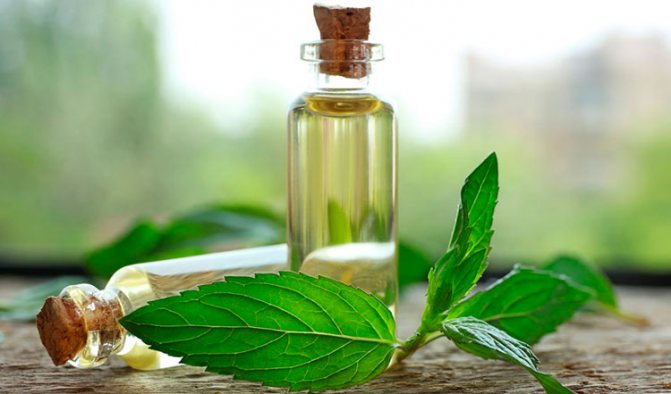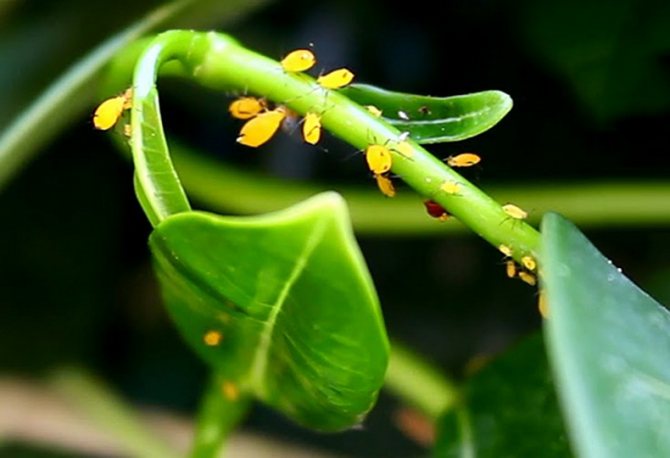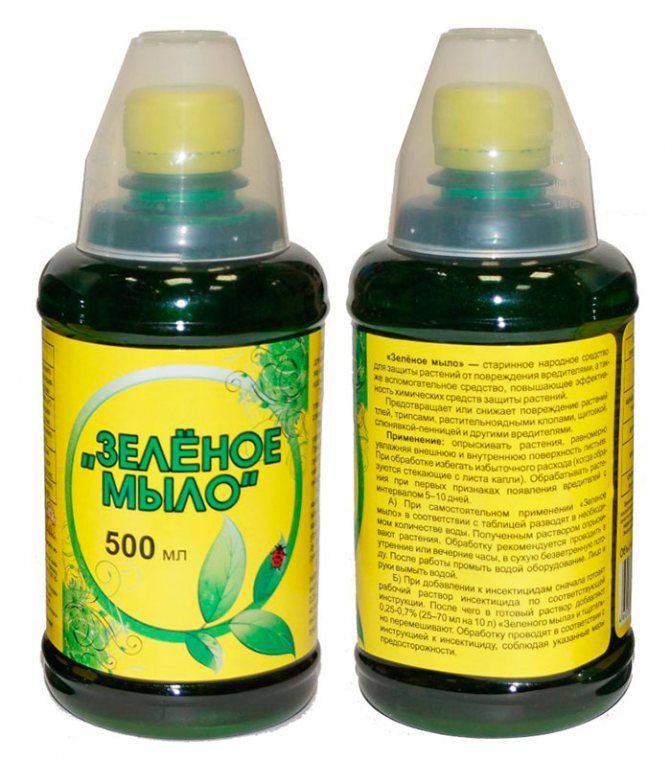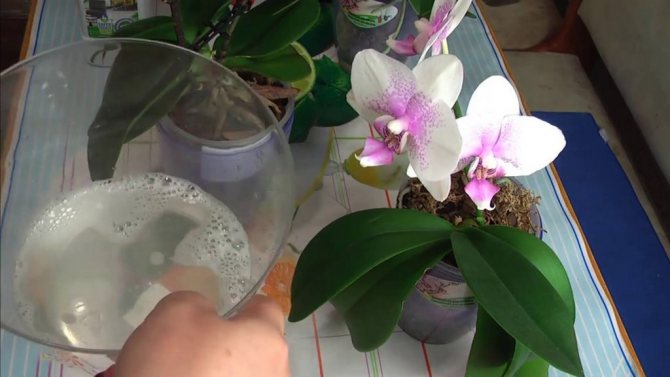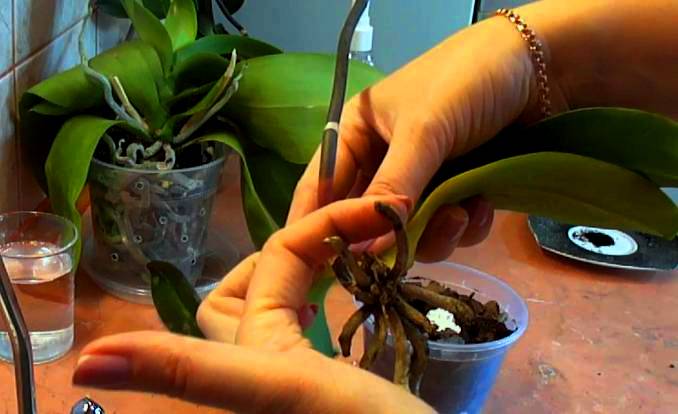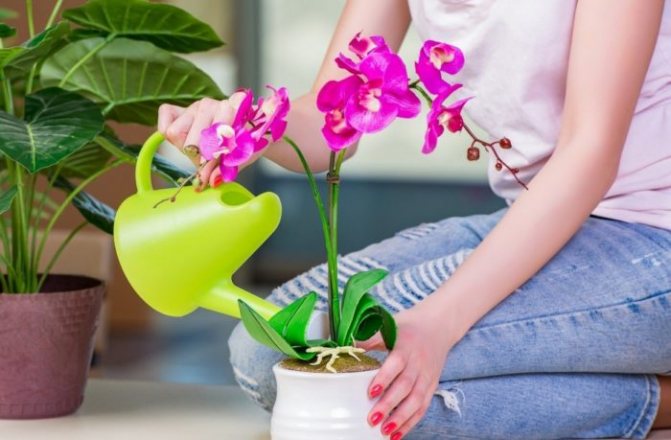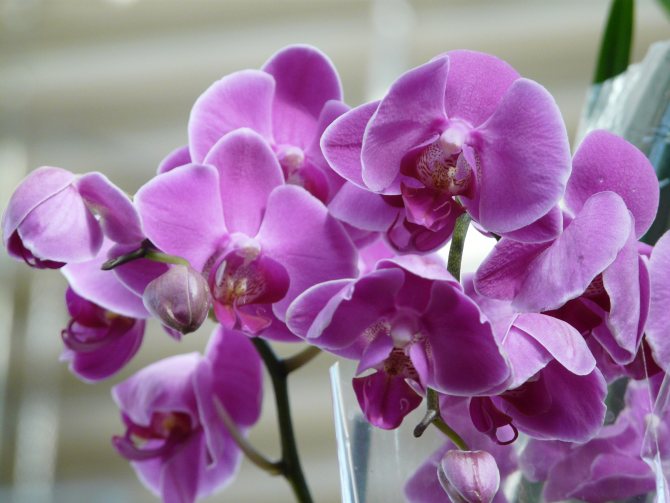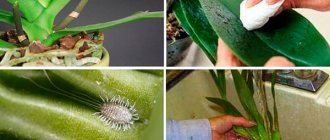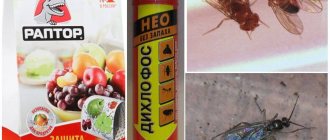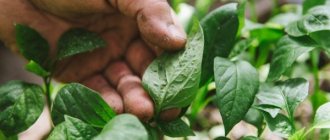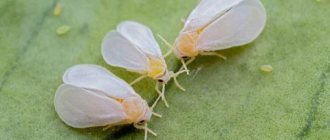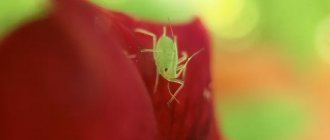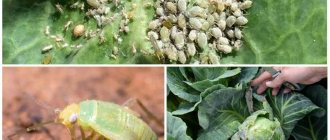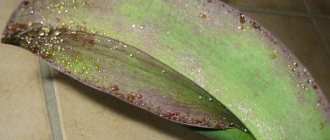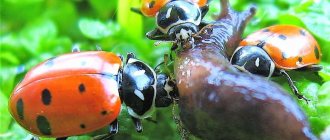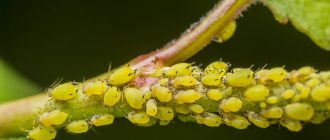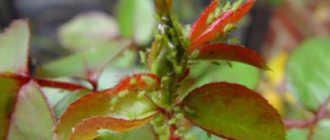Indoor plants are designed to green up the room, bring a fresh touch to the interior design and just give pleasure. Do not think that flowers at home are completely protected from pests. They suffer from insects in the same way as their street cousins. The blooming orchid amazes with special beauty and sophistication, but a colony of aphids on it can ruin all the beauty of the flower and destroy it. To prevent this from happening, you need to examine the plant more often and perform all the care steps.
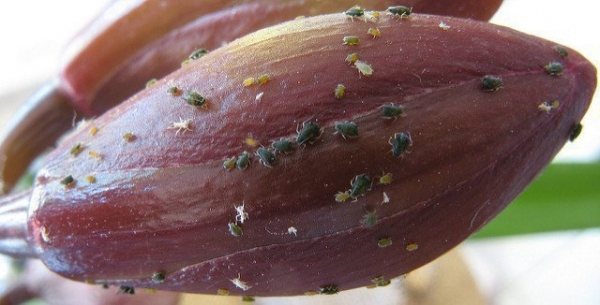
An aphid invasion can destroy an orchid
Aphids on orchids - the main signs and reasons for the appearance
Aphids on orchids multiply quickly enough and it is impossible not to detect them on flowers. After the appearance of one specimen, two days later, several hundred of these insects will already swarm on the plant. Aphids that attack a perennial plant are located on young shoots, on buds and blossoming flowers, as well as on the back of the leaf plates.
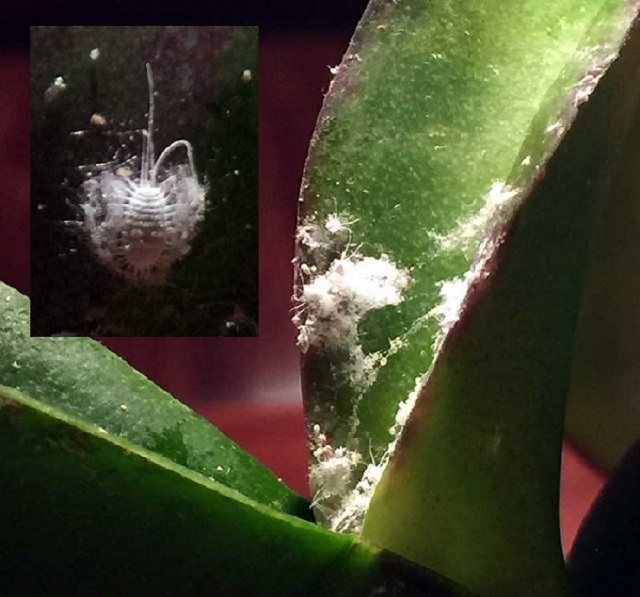

The areas covered with these pests are covered in a short time with their sweet and sticky secretions (pad), shiny in appearance. In addition to these signs, white scales can be clearly seen on the outside of the affected parts of the plant. They are insect skins that aphids shed during their development.
In the affected plant, growth slows down, and it begins to die out, this is expressed in yellowing and twisting of the leaves, the lack of the ability of the buds to open, or in the formation of a deformed flower when blooming. Due to the secretions of pests, a sooty fungus settles on the orchid, which manifests itself in the form of black mold spots.
Falls are a danger to perennials because of their attractiveness to ants, and in order to get rid of these pests, it will take much more effort than from aphids.
These harmful insects for the plant appear as a result of a too dry climate and a deficiency or excess of nutrients. A common cause is also a store-bought plant already infected with this infection, which was placed near other indoor flowers and thus transmitted the disease to them.
What types of pests affect a flower?
Orchids are affected by aphids of different types: gray, black, white, brown, green, red and yellow.
Aphids primarily settle on the back of the leaves. The insects then spread along the stem and eventually reach the flowers, affecting the entire plant.
Attention! Aphids feed on flower juices, thereby damaging its tissues. As a result, the leaves curl, the stem turns black, the flower stalks dry out and fall off.
You can find out more about what aphids eat here. These parasites in the course of their life secrete sticky sugary secretions that cover the flower with a translucent bloom. This liquid is very attractive for ants, with which aphids are in constant symbiosis (you can learn more about the symbiosis of ants and aphids here). Therefore, it is not surprising that a whole army of ants will reach for the flower for the appearance of aphids. You can learn more about the types of aphids from this material.
Effective folk methods for combating aphids on orchids
If an aphid attacked an orchid, you must immediately take action to eliminate it. The first step is to wash off the sticky pad from the plant with warm water and laundry soap, and also to organize its isolation from other indoor specimens. After that, you need to decide on a way to get rid of aphids, this can be done both using the folk method and using various chemical and biological preparations.
Folk methods contribute to the treatment of a flower only at an early stage of its defeat by aphids. The most popular options are the following:
- Using a soap solution, for its preparation you will need a laundry soap that has a dark color, which is crushed to a state of shavings and mixed with water (in the proportion of one tablespoon per one liter). After complete dissolution of the component, all parts of the plant are processed with the ready-made composition, while a sponge can be used. This method allows the soap to be replaced with a dishwashing detergent.
- The use of an infusion from the peel of any kind of citrus, one hundred grams of which is mixed with a liter of boiling water and infused for three days.
- Processing with onion infusion. When preparing it, the chopped onion is poured with a liter of boiling water and the composition is defended. Then the resulting infusion is cooled, filtered and applied to the affected plant using a spray bottle.
- Treating orchids with essential oils, particularly tea tree or peppermint products. In order to prepare such a solution, thirty drops of oil are dissolved in half a liter of water. Processing is carried out by applying it to the plant with a sponge. It is not recommended to carry out this procedure at a temperature exceeding + 25 ° C, and at a high level of humidity in the room.
- Getting rid of insects with rosehip infusion. In the process of preparing the medicinal composition, fifteen grams of dried rose hips are placed in one liter of warm water and kept for a day. Then the infusion is boiled for thirty minutes, cooled down and applied to the orchid.


In addition to the listed funds, you can also use the infusion of celandine, tobacco and flea shampoo and many others. All these folk methods should be used when there is a small amount of parasites on the plant. Before removing aphids from orchids, it is recommended to get rid of their heavily affected areas.
After processing the plant, it is necessary to monitor it for about two weeks in order to figure out what to do with the flower in the future. If, after carrying out activities using folk remedies, at least a small amount of aphids remain on the orchid, it is required to use chemical preparations, otherwise the parasites will multiply again in a short period of time.
How to find an insect on a plant?
The infection can be noticed by a number of characteristic signs.... When visually inspecting the plant, it is necessary to pay attention to the lower plate of the leaf, the stem and shoots, buds and flowers.
The severity of symptoms depends on the degree of damage and the size of the pest colony. Typical signs include deformation and twisting of foliage, dropping of peduncles, growing dark spots on the stem.
Attention! Also, when infested, all parts of the orchid can become covered with a sticky waxy liquid.
Chemical methods of struggle
Aphids on an orchid - how to deal with it in case of mass defeat, if traditional methods have not brought the desired result, this question is often asked by novice gardeners. In this case, it is necessary to resort to the help of chemical preparations, which differ among themselves in terms of the aggregate and order of action on pests:
- The essence of the treatment of a plant with contact preparations consists in the direction of action directly on the skin of the parasites. After such a procedure, it is not recommended to leave the plant in direct sunlight, in order to avoid the formation of burns. These drugs include Neoron, Spruzit-Af, Permethrin, Roxion-D.
- The action of intestinal preparations is aimed at the penetration of poisonous chemicals into the pests, when they devour the juice of plant cells. Since aphids, due to their gluttony, are able to absorb it continuously, its defeat by the drug occurs instantly. The most common of these funds are Fitoverm, Aktellik, Inta-Vir, Aktara and Arriva.
- Destruction of pests with systemic drugs, such as Bi-58, Fosfomite and Methylmercaptophos, occurs through the perennial root system into which they penetrate. From the roots, the poison enters the orchid juice, which actively absorbs the aphid.
It is important to take into account that it is not recommended to spray the plant with the same preparation for getting rid of aphids more than three times. Parasites become accustomed to certain chemical compounds and stop responding to them.
What to do for prevention?
Everyone knows that it is easier and more correct to prevent aphid infestation of a flower than to fight the invasion of this small and very dangerous pest later. To do this, the following preventive measures should be observed:
- When buying an orchid from a store, be sure to check if the plant you are taking is healthy. Take a close look at its root system and leaves for parasites.
- When transplanting a shop flower to a permanent place of residence for the first time, disinfect the prepared soil. Aphid larvae can be destroyed in the freezer or by heating the soil in the oven. But a simple treatment of the substrate with boiling water will be no less effective.
- It has been observed that excessively dry air can provoke the appearance of aphids. In order to avoid infestation of parasites, the air humidity in the room should be about 60%.
- Proper watering for the health of the flower is of no small importance. Excessive moisture in the buds of an orchid and on its leaves can attract insects to itself. It is best to periodically spray the plant with cool water from a spray bottle, and root watering is best done less often.
- Correct and regular feeding will give the orchid the strength to resist insect pests.
- Aphids do not tolerate strong, pungent odors, so it will be useful to put geranium next to the flower, lay bunches of wormwood or cloves of garlic nearby.
Mechanical and biological method of controlling aphids on orchids
How else to deal with aphids on orchids? You can use the bait in the form of glue traps, covered with yellow, which makes them attractive to insects. These products can be purchased in stores or you can make your own. It is advisable to use traps with glue applied on both sides (double-sided views). This method is considered the safest and most effective in getting rid of aphids in greenhouses and reduces the number of flying parasites by 90%.
Professional flower growers said that it is possible to fight aphids on indoor plants using traps alone, without resorting to chemicals. The disadvantage of this method is the impossibility of complete destruction of the larvae due to their settling on leaf plates and inability to move.
You can eliminate aphids indoors with the help of a ladybug. Their eggs can be purchased in special purpose garden centers, and they are bred in special “houses” that can mimic the natural habitat of these beneficial insects.
To remove aphids from orchids, it is allowed to resort to the help of biological products, which are considered a tool of a new generation. The impact of these funds on pests occurs in the process of their infection with various microorganisms.The result of this method of struggle can be observed in about a week. At the same time, their protective qualities persist for up to fourteen days.
Where and why does it appear?
There are several reasons why an aphid infects an orchid:
- The substrate used for planting the flower could contain these pests. It is better to buy soil for planting in a store from trusted suppliers.
- A store-bought flower may have aphids on stems or buds. Before buying, you must carefully inspect and check the flower for bugs and other suspicious changes.
- If there are many flowers in the house, then the aphids could well have moved from another plant. Proximity to windows can also attract aphids to indoor flowers.
- The reason may be improper care of the plant during the growth period.
It is necessary to periodically inspect the plant for the presence of sticky plaque characteristic of aphids.
Preventive measures to control aphids on orchids
Aphids that have settled on an orchid cause significant damage to it, kill and create conditions for the occurrence of various diseases and the appearance of other species of insects on it. This leads to serious problems, contributing to the disruption of the main processes that support the life of the plant.
Timely preventive measures taken can significantly reduce the risk of pests settling on perennials. The main prerequisite for the emergence and further development of aphids on plants is a low level of humidity in the room, ranging from thirty to thirty-five percent.
Experts breed orchids at a humidity of fifty-five to sixty percent, while regularly carrying out activities related to plant moisture, which are recommended to be done by spraying.
An excess of moisture accumulating on the surface of leaf plates, soil and in the axils of young shoots and buds entails the appearance of pests. Therefore, during the irrigation process, it is necessary to carefully control the amount of water used.
Lack or surplus of nutrients for plant nutrition also causes the appearance of aphids. Plants with low immunity attract the attention of parasites, especially due to iron deficiency. In addition, aphids often settle on plants for which fertilizing has been oversaturated with nitrogen fertilizers. Therefore, it is important to remember that proper dosing of dressings has a beneficial effect on increasing immunity in plants and, accordingly, the ability to resist all kinds of diseases and parasites.
Systematic inspection of a plant is important. If you find the slightest hint of aphids, you need to immediately process the orchid. During the treatment started, the formation of colonies of these pests will be prevented.
For the purpose of sanitation and hygiene, it is required to get rid of perennials that are significantly affected. A flower purchased in a store must be aged for two weeks and only after the absence of aphids and various diseases on it is confirmed, the plant can be placed near the rest of the indoor specimens.
When transplanting orchids, it is necessary to carry out high-quality disinfection of the planting vessels. A flower affected by harmful insects must be isolated in a room with humid climatic conditions.
For prophylaxis, it is recommended in the summer period between the vessels with indoor flowers to place mint leaves, which do not tolerate aphids at all. In winter, it is advisable to put indoor geranium on the windowsill next to the orchids.
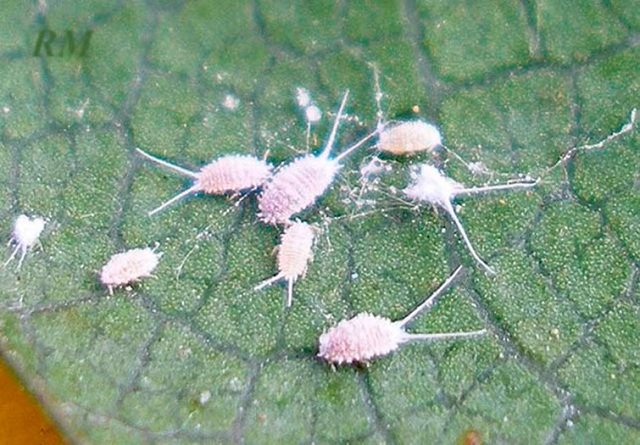

Insecticides
Means of systemic action instantly destroy small pests, larvae, prevent re-infection:
- Spark Double effect. Available in powder, tablet form. The active ingredient is cypermethrin.Broad spectrum insecticide. Safe for humans and animals if used correctly.
- Aktara. The most common drug among gardeners, gardeners, flower lovers. Available in a dosage sachet. For 1 liter of water, 1/3 of the dose is required.
- Tanrek. An effective remedy kills aphids within an hour. It is quickly absorbed by orchid leaves, retains its toxic properties for 20 days.
Spraying is carried out outdoors or in a well-ventilated area.
Aphids do not tolerate moisture, to prevent infestation, the leaves should be sprayed with cool water every evening.

